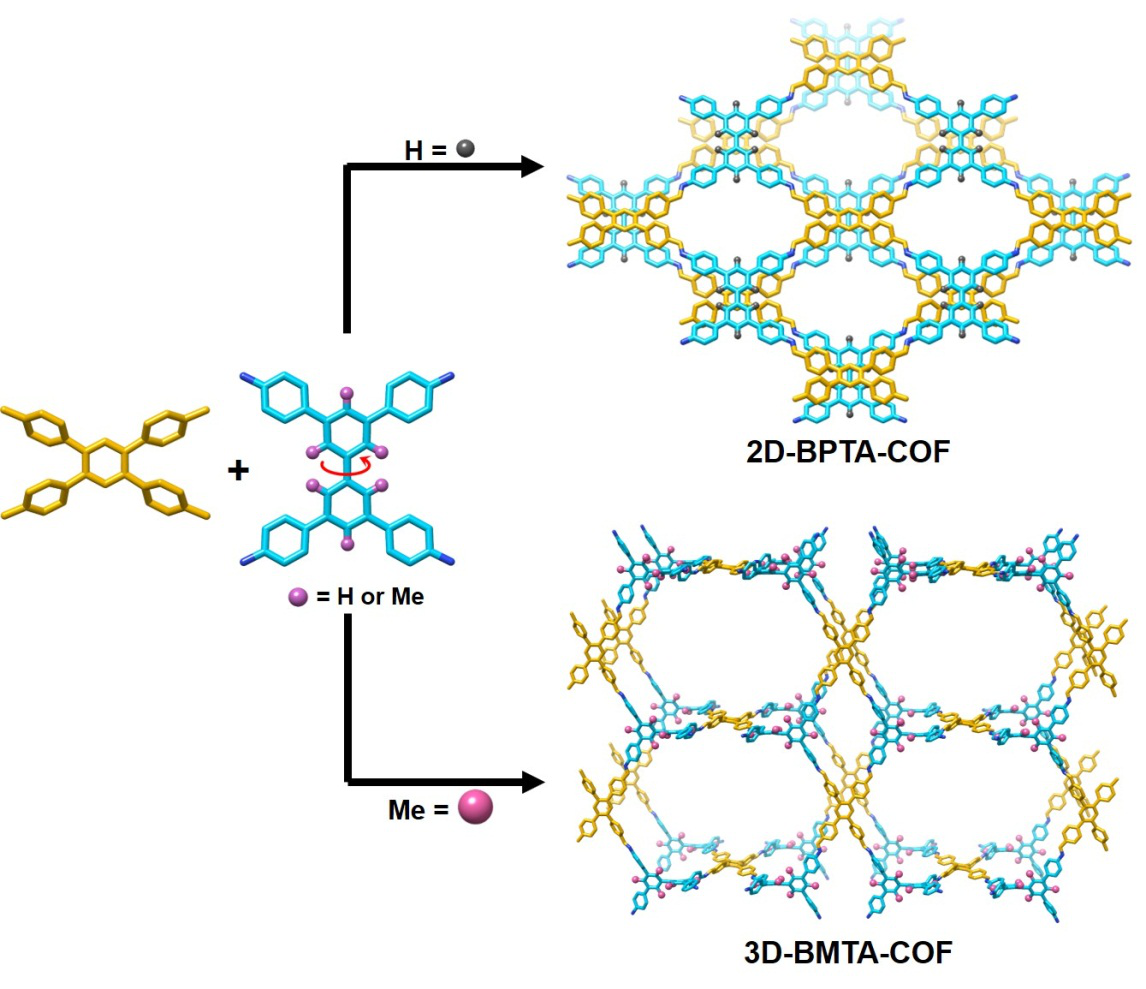The international authoritative journal Journal of the American Chemical Society recently published the latest research findings by the team of Prof.Wang Cheng of College of Chemistry and Molecular Sciences, Wuhan University. The result represents a general and straightforward way to expand the diversity of tetrahedral nodes for constructing 3D covalent organic frameworks (3D COFs).
The paper is entitled Twist Building Blocks from Planar to Tetrahedral for the Synthesis of Covalent Organic Frameworks. PhD student Gao Chao (Wuhan University) and PhD Li Jian (Peking University) are co-first authors, and Wang Cheng and Researcher Sun Junliang (Peking University) are co-corresponding authors.

Covalent Organic Frameworks (COFs) are a new type of crystalline organic porous materials, which show broad application prospects in many fields. Current researches of COFs mainly focus on two-dimensional (2D) systems while 3D COFs are still rarely reported. The main reasons include the great difficulties in synthesis and structural representation of the 3D COFs, and the fact that building blocks, especially the steric ones, is very limited. From the perspective of solid geometry, the construction of 3D COFs usually needs a steric building block which can be extended to 3D space. However, there are very few types of tetrahedral nodes currently (mainly derivatives of tetraphenylmethane or adamantane), and this severely hinders the development of 3D COFs.
In earlier researches, Wang Cheng’s team proposed “4+4” connection as a new strategy for the topology design of the construction of 3D COFs. In this paper, they report the designed synthesis of two COFs with different dimensions, 2D-BPTA-COF and 3D-BMTA-COF, by twisting building blocks from planar to tetrahedral with steric hindrance, adopting "4 + 4" connection and using biphenyl-based precursors with different groups. Structural analysis reveals that 2D-BPTA-COF adopts a layered stacked structure and that the dihedral angle of biphenyl rings in 2D-BPTA-COF is ∼0°. After introducing methyl groups in the building blocks at the ortho positions, the dihedral angle of biphenyl rings in 3D-BMTA-COF is ∼60°, and 3D-BMTA-COF adopts a 7-fold interpenetrated structure with pts topology. This structure shows that precursors can be twisted from planar to tetrahedral with hindrance, then to 3D COFs, which provides inspirations for increasing the structural diversity of 3D COFs.
Link to the paper:https://pubs.acs.org/doi/10.1021/jacs.9b13824